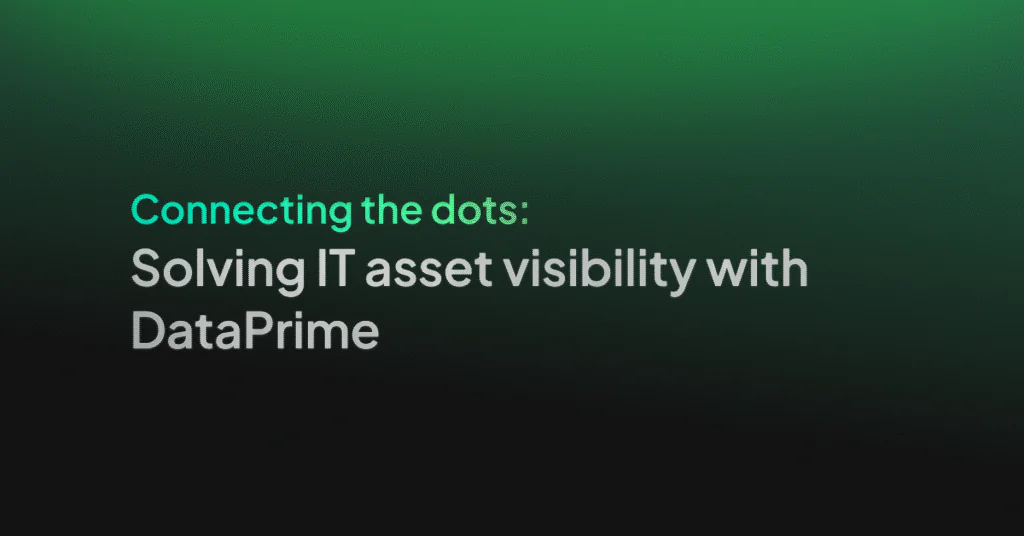OpenTelemetry Overview

Monitoring distributed systems means collecting data from various sources, including servers, containers, and applications. In large organizations, this data distribution makes it harder to get a single view of the performance of their entire system.
OpenTelemetry helps you streamline your full-stack observability efforts by giving you a single, universal format for collecting and sending telemetry data. Thus, OpenTelemetry makes improving performance and troubleshooting issues easier for teams.
In this article, we will understand what is OpenTelemetry, the data pipeline, components of OpenTelemetry, and the benefits of OpenTelemetry.
What is OpenTelemetry?
OpenTelemetry (a.k.a. OTel) is an open-source observability framework under the Cloud Native Computing Foundation (CNCF). Otel helps developers, operations, DevOps, and IT teams instrument, generate, collect, and export telemetry data. With Otel, you can monitor application health, troubleshoot issues, and gain insights into the system’s overall performance.
In the context of OpenTelemetry, observability refers to the ability to collect, measure, and analyze data about an application and its infrastructure’s behavior and performance. OpenTelemetry provides tools, APIs, libraries, SDKs, and agents to add observability to your system.
With OpenTelemetry, you can instrument your application in a vendor-agnostic way and then analyze the telemetry data in your backend tool of choice, whether Prometheus, Jaeger, Zipkin, or others.
How does OpenTelemetry work?
OpenTelemetry helps gather and process Telemetry data through stages or components, from collection to analysis and storage. These stages comprise the OpenTelemetry (OTel) pipeline, often called the telemetry data processing pipeline.
Here’s a high-level overview of how OpenTelemetry works:
- Instrumentation: Add code to your applications and services to capture telemetry data, including traces, metrics, logs, and context information. Use OpenTelemetry libraries and SDKs to instrument your code.
- Data Collection: The code collects telemetry data such as traces representing the flow of requests and interactions, metrics measuring performance and resource usage, and log recording events and errors.
- Data Exporters: After data is collected, it is sent to one or more data exporters responsible for transmitting telemetry data to external systems or observability backends for further processing and storage.
- Agent (Optional): Agents help with data aggregation, batching, and load balancing. Use these as an intermediary between your code & exporters.
- Data Transformation and Enrichment: Before exporting data, it may go through transformation and enrichment stages. This involves adding metadata, filtering data, or performing aggregations.
- Export to Backends: The data is then exported to observability backends or data storage solutions. These backends are responsible for storing, indexing, and making the data available for other processes.
- Data Query and Analysis: Query and analyze the data using tools such as Grafana, Kibana, Prometheus, Jaeger, and custom-built dashboards. These tools provide insights into application behavior, performance, and issues.
- Alerting and Monitoring(optional): Set up alerting rules and thresholds based on data to proactively detect and respond to issues. Alerts can be triggered when metrics or trace data indicate abnormal behavior.
- Visualization and Reporting: Visualizations and reports generated from the telemetry data help teams understand system behavior, track key performance indicators, and make informed decisions
The entire OpenTelemetry process can be implemented using the various components as follows:
Components of OpenTelemetry
OpenTelemetry has several vendor-neutral and open-source components, including:
- APIs and SDKs per programming language for generating and emitting telemetry data
- Collector component to receive, process, and export telemetry data
- OTLP protocol for transmitting telemetry data
These components work together to specify metrics to be measured, gather the relevant data, clean and organize the information, and export it in the appropriate format to a monitoring backend.
OpenTelemetry’s components are loosely coupled, so you can easily choose which OTel parts you want to integrate. Also, these components can be implemented with a wide range of programming languages, including Go, Java, and Python.
Let’s understand a bit about all these components:
APIs and SDKs
Application programming interfaces (APIs) help instrument your code and coordinate data collection across your system. OpenTelemetry defines a set of language-agnostic APIs that define the structure and behavior of the telemetry data and operations. Also, for each supported programming language, there are language-specific OpenTelemetry implementations, so you can implement these APIs in the language of your choice.
Software development kits (SDKs) implement and support APIs via libraries that help gather, process, and export data. Unlike APIs, however, SDKs are language-specific.
OpenTelemetry Collector
The collector receives, processes, and exports telemetry data to your favorite observability tool, such as Coralogix. While not technically required, it is an extremely useful component of the OpenTelemetry architecture because it allows flexibility for receiving and sending the application telemetry to the backend(s).
The OpenTelemtry Collector consists of three components:
- Receiver – Defines how data is gathered: pushing to the collector or pulling when required
- Processor – Intermediary operations to prepare data for exporting: batching, adding metadata, etc.
- Exporter – Send telemetry data to an open source or commercial backend. Can push or pull data.
Since the collector is just a specification for collecting and sending telemetry, it still requires a backend to receive, store, and process the data.
OTLP: OpenTelemetry Protocol
OpenTelemetry defines a vendor and tool-agnostic protocol specification called OTLP (OpenTelemetry Protocol) for all kinds of telemetry data. OTLP can be used for transmitting telemetry data from the SDK to the Collector and from the Collector to the backend tool of choice. The OTLP specification defines the encoding, transport, and delivery mechanism for the data and is the future-proof choice.
Now that you have understood what is OpenTelemetry and how it works, let’s understand some benefits that you can get after using OpenTelemetry for your application.
Benefits of OpenTelemetry
OTel provides a future-proof standard for working with telemetry data in your cloud-native applications. You spend less debugging time and more time delivering business-centric features.
Some of the other benefits that you can see after implementing OpenTelemetry in your applications include:
Improved Observability
Observability using OpenTelemetry provides a standardized and comprehensive approach to observability. You can trace requests, collect metrics, and analyze data to monitor system health effectively to gain deep insights into your application’s performance and behavior.
By adopting OpenTelemetry, you ensure that your full-stack observability practices remain up-to-date and aligned with industry standards. As the project evolves, you can benefit from new features and improvements without major rework.
Easy Setup for Distributed Tracing
OpenTelemetry enables distributed tracing, allowing you to trace requests as they traverse through different services and components of your application. This setup helps you visualize request flows, identify bottlenecks, and diagnose performance issues in complex, distributed systems.
By using OpenTelemetry, your organization doesn’t need to spend time developing an in-house solution or researching individual tools for your stack. You can even conserve engineering efforts, if you decide to switch to a different vendor or add tools to your system. Your team won’t need to develop new telemetry mechanisms after adding new tools.
Vendor Neutrality
OpenTelemetry provides a vendor-neutral, open-source standard for observability instrumentation. You can use the same instrumentation libraries and practices across different programming languages and frameworks.
With OpenTelemetry, you can collect telemetry data from different sources and send it to multiple platforms without significant configuration changes. OTel enables you to send Telemetry data to Coralogix or any backend of your choice, thus preventing vendor lock-in.
Flexibility for Data Metrics and Integration
OpenTelemetry allows you to control the telemetry data you send to your platforms. You only capture the information you need, reducing unnecessary noise and excess costs. Additionally, filtering makes it easier to also add custom tags to metrics for streamlined organization and searching.
OpenTelemetry also allows exporters to integrate with various observability backends and platforms, including popular solutions like Prometheus, Jaeger, Zipkin, Elasticsearch, and more. So, you can choose any set of tools that fulfill your organizational needs.
Coralogix and OpenTelemetry
Data plus context are key to supercharging observability using OpenTelemetry. Coralogix supports OpenTelemetry to get telemetry data (traces, logs, and metrics) from your app as requests travel through its many services and other infrastructure. You can easily use OpenTelemetry’s APIs, SDKs, and tools to collect and export observability data from your environment directly to Coralogix.
Coralogix currently supports OpenTelemetry metrics v0.19. Combine your telemetry data and Coralogix to supercharge your system’s observability!




